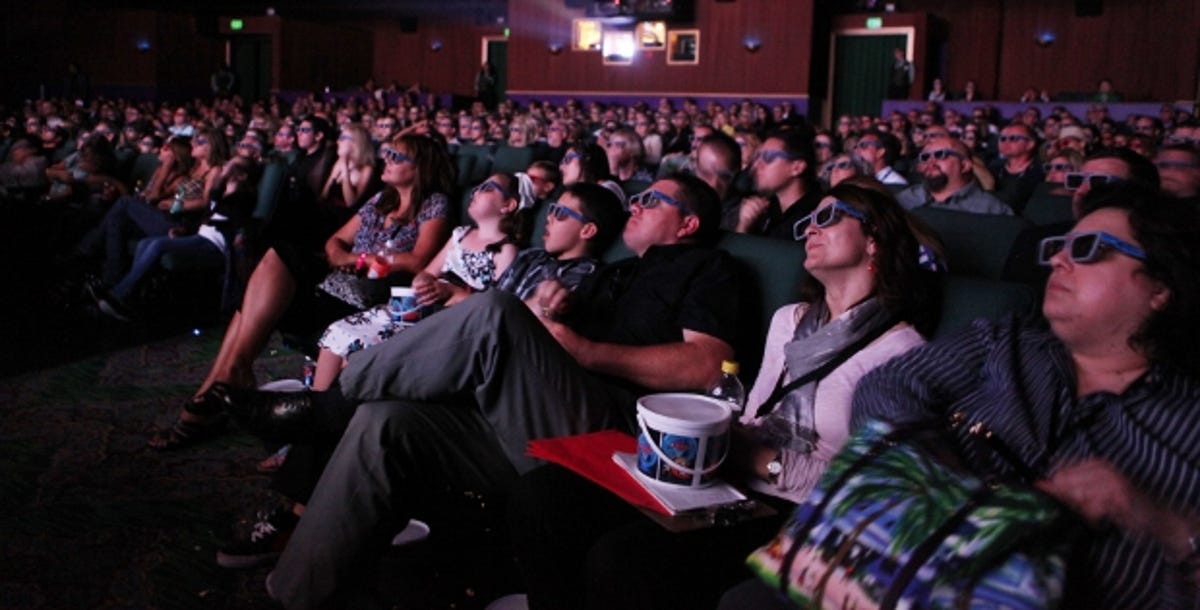
Despite disappointing 3D ticket sales for a slew of recent blockbusters, the wheels haven’t fallen off the stereoscopic bandwagon just yet. At least, that was the message coming from movie makers at the recent Big Screen film festival in London.
“It’s still early days; give 3D a chance,” assorted film makers moaned. But patience appears to be growing thin. Box-office returns continue to indicate that an ever-increasing number of us, tiring of 3D and the associated high ticket prices, are seeking out 2D showings of 3D movies instead.
Pirates of the Caribbean: On Stranger Tides did just 47 per cent of its US business in 3D. Kung Fu Panda 2 managed even less, at 45 per cent. If consumers are already falling out of love with the technology, the impact on both Hollywood and the home-entertainment market could be huge.
Too early to panic, say experts
Speaking at the Big Screen debate on 3D cinema, Dan Lemmon, visual effects supervisor at special-effects house Weta Digital, suggested some drop-off was inevitable as studio expectations had been set too high, both creatively and commercially. “Avatar was a landmark film, ahead of its time,” he said.
Matt Bristowe, head of production at stereoscopic post-production house Prime Focus, suggested it was still too early to predict where 3D is going. “I think we’ve already begun to move on from the period when film executives had a knee-jerk reaction and wanted to do everything in 3D,” he said.


When quizzed as to why Rise of the Planet of the Apes was shot flat, Lemmon, who worked on the film’s remarkable special effects, said there were compelling reasons to stay with 2D. “Shooting in 3D is just much more expensive,” he said. “The process takes longer and the cameras are heavier. There’s not an infinite budget available. We wanted to put the money into the apes, not immersive 3D.”
Sometimes 3D just isn’t appropriate, Lemmon said.
Creative potential not yet harnessed
Bristowe insisted that it’s still early days for stereoscopic technology, saying its creative potential has yet to be realised.
“Film makers can do many things to enhance a story, by adding a slight bit of sharpness here or a flash colour there. They create images much like a painter would. Now they’re also beginning to use 3D in the same way,” he said. “We mustn’t confuse 3D films with theme-park 3D. It’s very different.”
Bristowe said that different directors approach 3D from different angles. His team from Prime Focus worked on the 3D climax for Harry Potter and the Deathly Hallows: Part 2. He said director David Yates had a very clear idea of what he wanted to achieve. “David wanted stuff to be in positive space [for a deep, window-like effect]. He didn’t want it to be on the screen plane.”
This is a very different technique from that used by James Cameron, Bristowe said. “On Avatar, Cameron liked to put things of interest on the screen plane. Some people find that a more comfortable viewing experience.”
In defence of retro 3D
One aspect of 3D which has been universally blasted is the practice of post-converting 2D material into 3D, both theatrically and in 3D TVs. Bristowe, however, insisted that things have moved on dramatically since the furore surrounding Clash of the Titans.
“It’s a topic everyone has an opinion on,” he admitted. “We’ve seen good and not-so-good conversions. But what’s important is that we make a good film first. 3D — whether it’s native or done in post-production — is just a visual effects process. It doesn’t really matter how it’s achieved.”


Bristowe was quick to add that conversion isn’t a cheap option. “3D conversion technology takes millions of dollars — there’s nothing automated about it. Automatic 2D-to-3D systems can never work because they can’t work out where things sit in space. You need people to do that work.”
Bristowe said he’s keeping his fingers and toes crossed that his latest post-conversion project meets with a good critical reception. “We’ve just finished the 3D version of Star Wars Episode One: The Phantom Menace. George [Lucas] has signed off on it now. If it doesn’t go down well, we’ll take a real kicking,” he said.
When polled, around 50 per cent of the audience at the Big Screen debate declared a negative attitude to 3D. Whether you’re pro or con, let us know in the comments section below, or on our Facebook wall.




